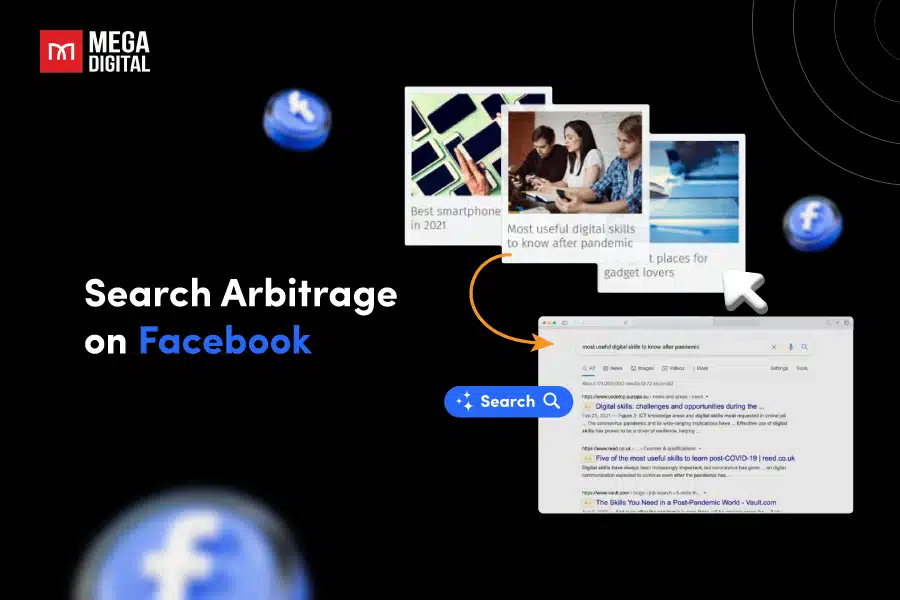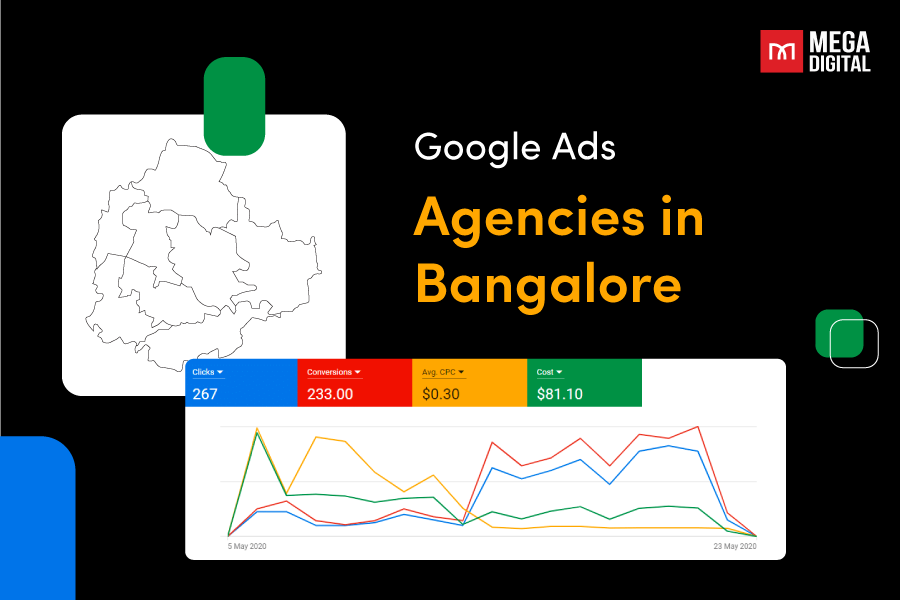Choosing between YouTube Shorts vs TikTok for your short-form video content can be tricky. Both platforms offer unique strengths, but which one fits your strategy best? In this blog post, we break down their core differences across 6 key aspects so you can confidently pick the platform that aligns with your goals!
Quick Summary
- Overview of TikTok vs YouTube Shorts fundamentals
- 6 key differences: audience, tools, reach, monetization, analytics, community
- When to use each with real scenarios
- Takeaway: align platform with goals—or combine for maximum reach
Platform Overview: TikTok vs YouTube Shorts
Choosing between TikTok and YouTube Shorts starts with understanding how each platform was built and what makes them unique. Below is a quick overview to help set the stage for a deeper comparison:
YouTube Shorts
Introduced in 2020, YouTube Shorts is YouTube’s answer to the short-form video trend, videos that last between 15 to 30 seconds. Shorts leverages its vast existing YouTube user base, which surpassed 2.5 billion monthly active users in 2025. This integration allows creators to tap into a broader audience and utilize YouTube’s robust monetization tools, including ad revenue sharing and channel memberships.
Emily Paetau, Director of Managed Services at DigiSphere Marketing, highlights the strategic advantage of Shorts: “YouTube Shorts are a great platform for whipping up engaging agency content.”
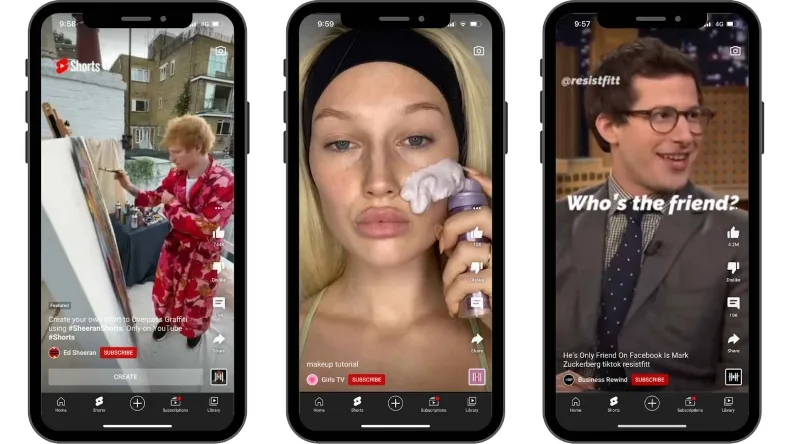
TikTok
Launched in 2016, TikTok has rapidly become a global hub for short-form video content, particularly resonating with younger audiences. By 2025, the platform boasts over 1.6 billion monthly active users, making it a dominant force in the social media landscape.
TikTok’s algorithm is renowned for its ability to surface engaging content quickly, allowing creators to achieve viral status even without a large follower base. The platform’s emphasis on trends, music integration, and creative tools like filters and effects empowers users to produce compelling content that resonates with a global audience.
As noted by TikTok’s UK commercial head, Kris Boger, “TikTok is a cultural hub and its popularity with Gen Z makes it a staple in modern marketing strategies”.

Core Similarities
TikTok and YouTube Shorts share several key features that define the short-form video experience:
- Support vertical video formats designed for mobile viewing.
- Videos are quick to watch and appear in a swipeable feed for endless scrolling.
- Dominate short-form content. TikTok allows videos up to 10 minutes, but most popular ones are under 60 seconds. YouTube Shorts now supports videos up to 3 minutes, giving creators a bit more flexibility.
- Ideal for entertaining content that captures attention fast.
TikTok vs YouTube Shorts: What are Key Differences?
Although YouTube Shorts and TikTok are both popular for short-form video content, they have distinct features that set them apart. Here are the 6 key differences between the two:
1. Audience and Demographics
When choosing between YouTube Shorts and TikTok for your brand, understanding the differences in user base and demographics is crucial. Let’s break down the key differences in their audience profiles, so you can effectively target the right viewers for your content.
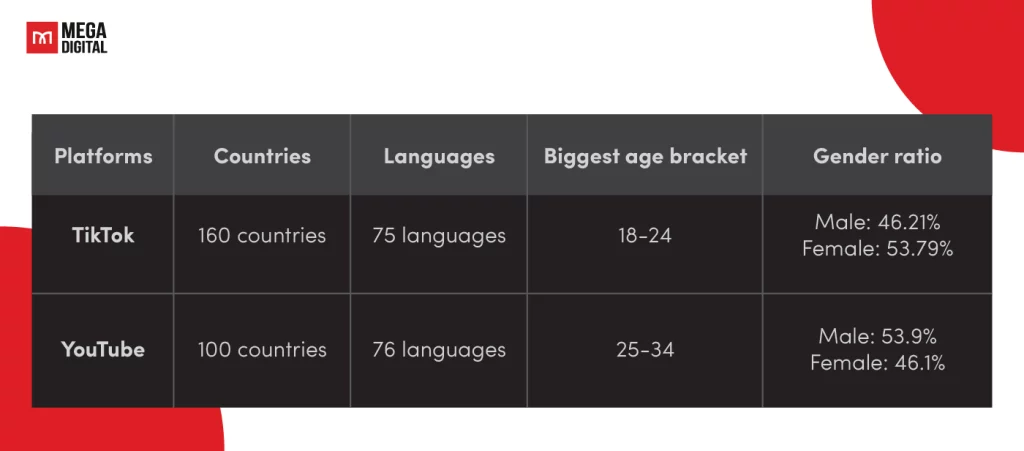
YouTube Shorts
YouTube Shorts benefits from a gigantic global user base that stood at 2.5 billion monthly active users in 2025. It also caters to a very diverse audience profile. 64% of Shorts viewers are 18-34, and 22% belong to the 35-49 age bracket. This vast appeal and varied interests stem from different content preferences on Shorts, including how-tos, commentary, product reviews, and creator narratives.
TikTok
Since TikTok thrives on fast-paced, trending, and entertaining content, it aligns with the tastes of a youthful, mobile-centric audience. Thus, its core demographic is younger than TikTok’s. More than 50% of its users are in the 18 to 24 age group. According to Statista, TikTok had more than 955 million active users worldwide as of 2025.

Conclusion
While TikTok deals with the younger, trend-conscious crowd across emerging markets, YouTube Shorts caters to wider demographics. This makes YouTube Shorts a great choice for campaigns that target multiple age groups or global audiences.
2. Content Creation Tools & Editing Features
When it comes to editing and creation tools, YouTube Shorts and TikTok each offer unique features that can enhance your video content. Here’s a closer look at how each platform’s editing features, effects, and customization options!
YouTube Shorts
YouTube Shorts emphasizes straightforward editing, suitable for creators who want to repurpose long-form content or share quick updates. Users can add music from YouTube’s vast licensed library, apply simple filters, adjust playback speed, and overlay text.
While the platform has introduced the ‘Remix’ feature and continues improving its editing capabilities, the creation tools are limited compared to TikTok.
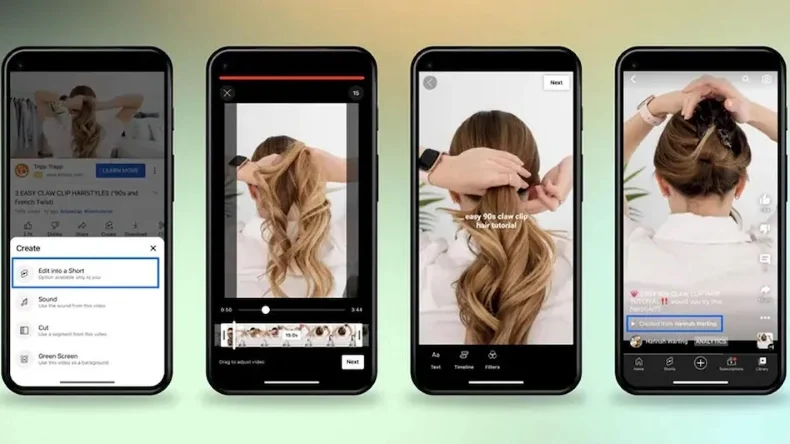
TikTok
Meanwhile, TikTok offers a more advanced set of editing tools. Users have access to thousands of filters, effects, and green screen options. One of TikTok’s strongest assets is its native integration of trending sounds, which not only enhances videos but also helps boost discoverability.

Creators can personalize their content with dynamic text styling, animated and static stickers, and speed controls for slow-motion or time-lapse effects. These tools empower users to produce visually engaging and playful content, all within the app.
Conclusion
A key difference lies in how each platform supports creativity. TikTok offers a deeper toolkit, including green screens and trending audio, which encourages viral, playful content. In contrast, YouTube Shorts sticks to simpler, utility-driven features, appealing to creators seeking minimal post-production.
3. Algorithm and Reach
Success on both TikTok and YouTube largely depends on understanding how their algorithms work. Although the exact mechanics remain uncertain, both platforms seem to rely on similar factors, including content engagement, user interactions, and video topics.
YouTube Shorts
YouTube Shorts runs on a separate algorithm from traditional YouTube videos. However, it’s still influenced by searchability, engagement rates, and content topics. Hence, it is still able to capitalize on YouTube’s massive search ecosystem and long-term discoverability, appearing in recommendations or search results alongside long-form videos.

TikTok
Ranking for watch time, shares, likes, comments, hashtags, and music trends, TikTok creates a perfect environment for speedy content virality. Personalized recommendations at a massive scale are delivered by the “For You” feed, allowing new creators to build huge audiences rapidly, even with no follower base.
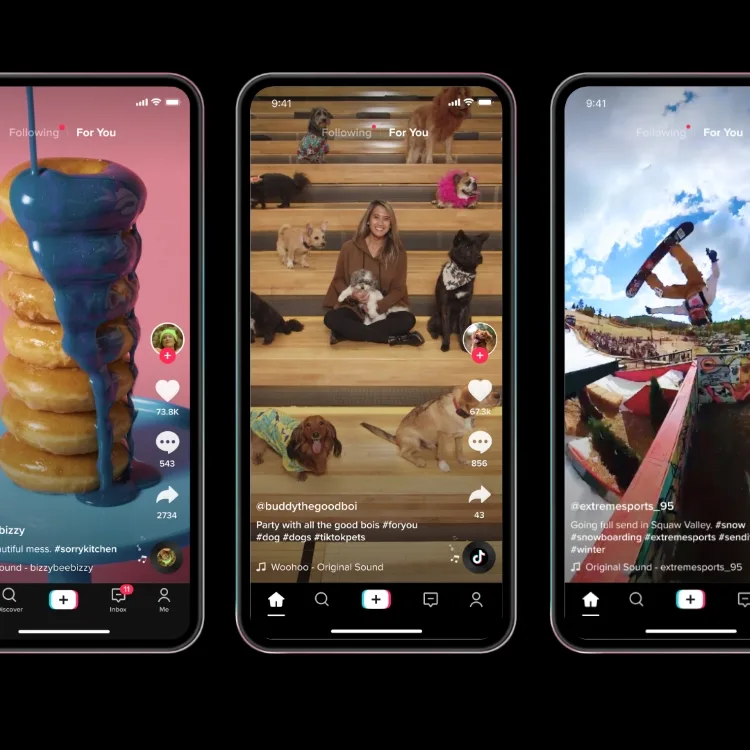
Conclusion
TikTok’s fast-paced, trend-driven algorithm is made for short-term virality and quick exposure. On the contrary, YouTube Shorts gives a more sustainable, evergreen horizon of visibility, which would be exponentially increased if coupled with SEO and continuous engagement.
4. Monetization
If you’re looking to turn your content into revenue, it’s important to understand the monetization options each platform offers. Let’s explore how YouTube Shorts and TikTok differ in their monetization features:
YouTube Shorts
Creators of YouTube Shorts have two major ways of monetizing their videos. One of these is the YouTube Partner Program which pays creators for their shares of ad revenue from ads shown on their Shorts.
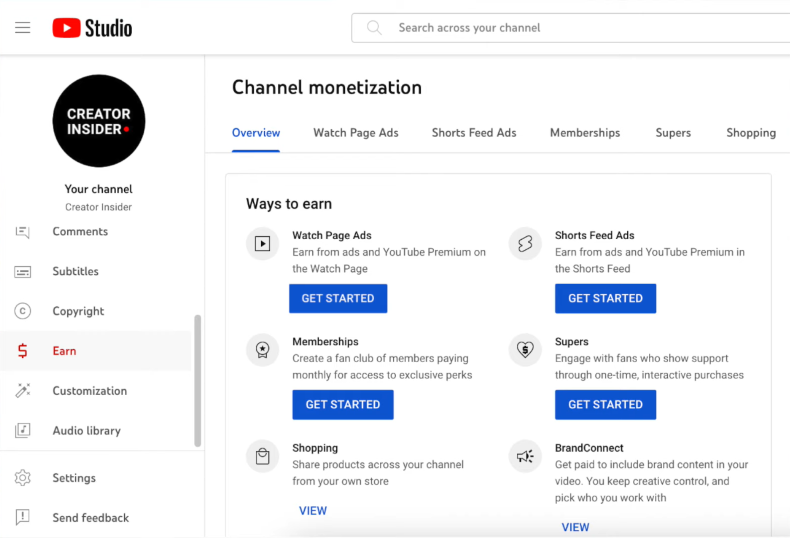
Furthermore, users may be able to do brand deals or partnerships. Creators receive income for sponsored content, product placements, or affiliate marketing by teaming up with brands that fit their content.
TikTok
TikTok pays creators via The Creator Fund. It assesses earnings on parameters like video engagement, video quality, and regions.
However, to be eligible for participation, certain criteria need to be satisfied, like having at least 100,000 views in the past 30 days and 10,000 followers. Consequently, it creates difficulty for the small creators to earn money.
Apart from that, TikTok creators also monetize through brand partnerships and influencer marketing. Creators may collaborate with brands to advertise products, and services, follow paid sponsorships, or develop sponsored content.
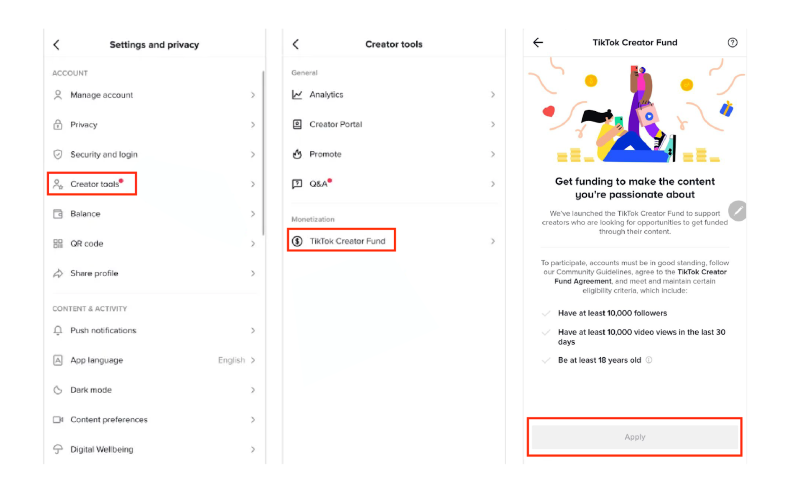
Conclusion
Both platforms offer multiple monetization avenues, but YouTube Shorts tends to provide more consistent options through ad revenue sharing, while TikTok offers the Creator Fund but has more stringent eligibility requirements.
>>> Read more: How to Join TikTok Creator Fund & Make Money from Your Content
5. Analytics & Performance Tracking
Tracking how your content performs is essential to refining your video strategy. Both TikTok and YouTube Shorts offer creators built-in analytics, but they differ significantly in depth and accessibility.
YouTube Shorts
YouTube Shorts benefit from the powerful YouTube Studio. It provides comprehensive analytics like real-time metrics, detailed audience insights, and advanced tools like audience retention graphs. These help creators understand exactly where viewers drop off in a video, which is critical for improving content structure. YouTube Shorts performance is also integrated with broader channel metrics.
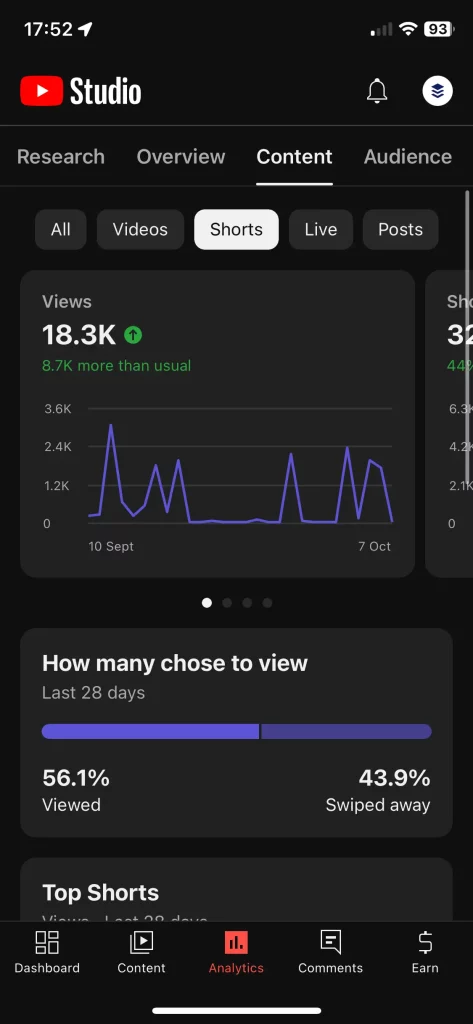
TikTok
TikTok comes along with its very own native analytics dashboard for Pro accounts, with insights into video views, follower growth, audience demographics, and engagement metrics. However, its historical data is limited. The data covers only the past 7 to 60 days, making it harder to track long-term performance trends. While useful for monitoring short-term virality and engagement spikes, TikTok analytics lack the granularity needed for in-depth performance analysis.
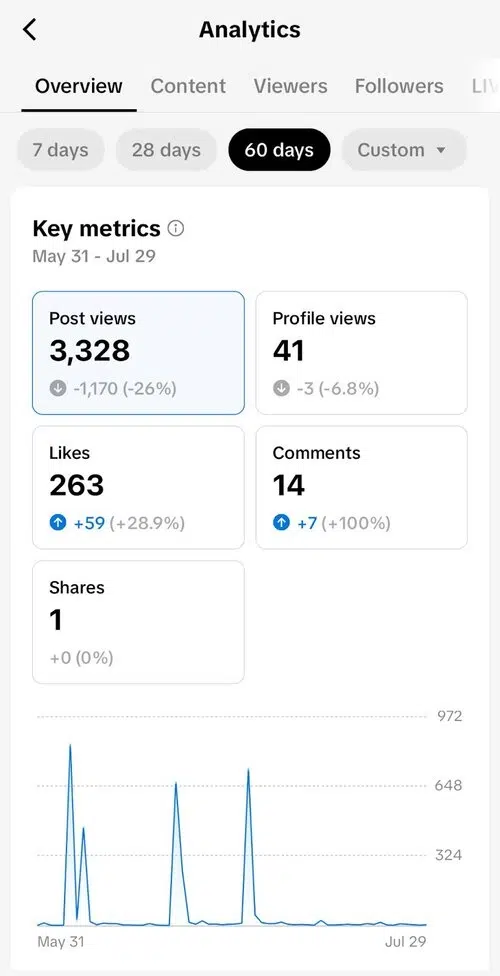
Conclusion
If your strategy relies on data-driven optimization and long-term planning, YouTube Shorts offers more robust tools. TikTok, while effective for tracking short bursts of engagement, is better suited for monitoring quick viral success rather than building sustained performance insights.
6. Community Building & Engagement
Apart from views on content, the ability to build a loyal and engaged community is what nurtures long-term gains in the short-form video genre. Let’s see how TikTok vs YouTube Shorts differ in terms of creator–audience connections:
YouTube Shorts
Shorts, by design, impose a content-first approach with communities coming second, though engagement remains crucial. Views, likes, and comments or pinned posts are ways creators can engage with the viewers on the platform.
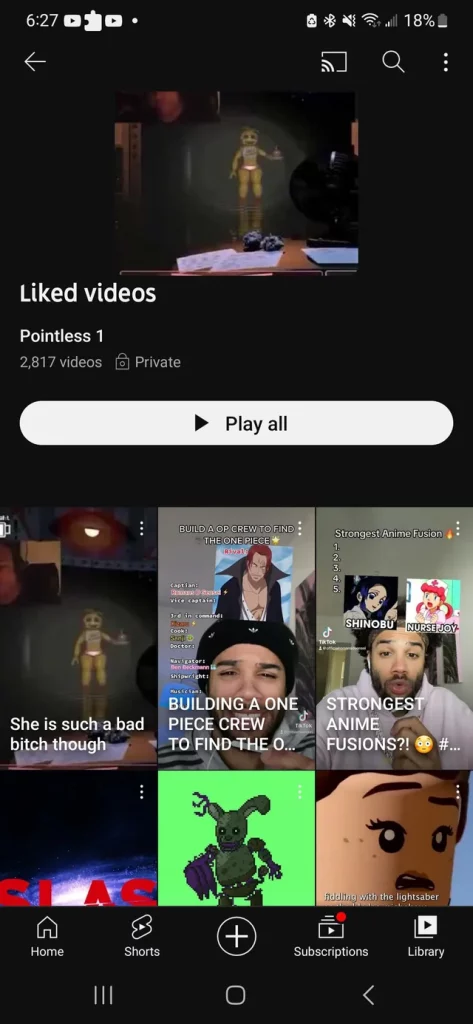
Still, the key is the transition from Shorts to a creator’s long-form videos, community tab, livestreams, or even paid memberships is seamless. This allows for deeper community building over time, especially if the creators have diverse content ads.
TikTok
TikTok is immensely interactive, with Duet, Stitch, and reply-with-video features allowing for real-time two-way engagement. Trends and challenges give way to viral conversations wherein creators gain quick views and rapport with their audience. TikTok further promotes communities by the algorithmic showing of content to people who have engaged with a similar creator or content style. This somewhat makes locating a niche and building a loyal audience easier.

Conclusion
TikTok stands out by quickly engaging audiences in real-time interaction and generating momentum within niche communities, while YouTube Shorts, more passive in its short-form interactions, nurtures communities for more sustainable long-term growth through its larger platform ecosystem.
When to use YouTube Shorts and TikTok?
Choosing the right platform for your content can be tricky. Here’s a guide on when to use YouTube Shorts or TikTok to get the most out of your social media marketing efforts.
When to use YouTube Shorts?
If you’re wondering whether YouTube Shorts is the right fit for your content strategy, consider these scenarios!
1. You have an Existing Youtube Audience
YouTube Shorts works for creators who have already got a subscriber base on YouTube.
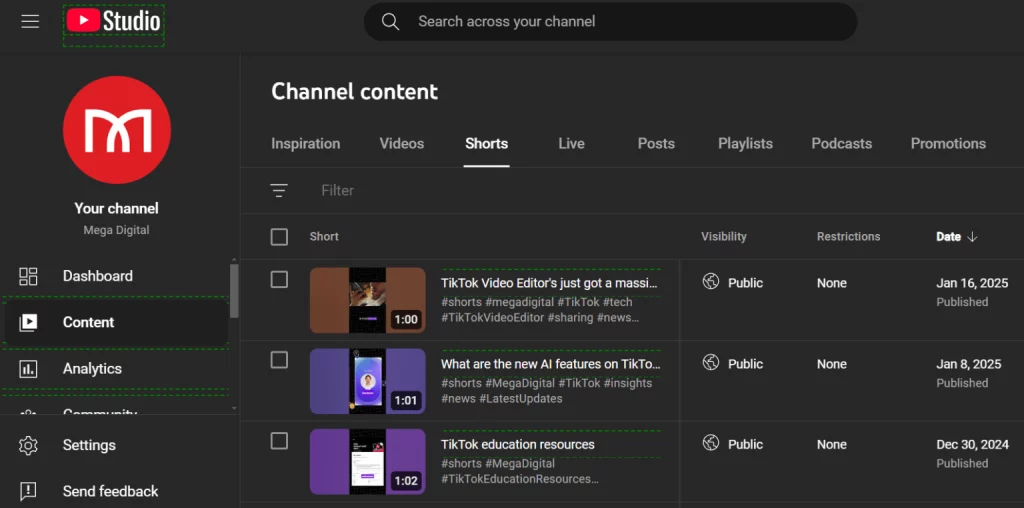
Short-form videos are great extensions of long-form content, helping creators re-engage their audience while attracting new viewers through the Shorts feed.
For example, a creator who primarily uploads vlogs or tutorials can use Shorts to post teasers, updates, or quick tips. This integrated approach ensures creators stay connected with subscribers across content formats.
2. You seek Monetization Opportunities
If making consistent money is your main goal, YouTube Shorts might be the better choice. On YouTube, creators can earn from several sources, such as ad revenue, channel memberships, and merchandise sales, all within the same platform.
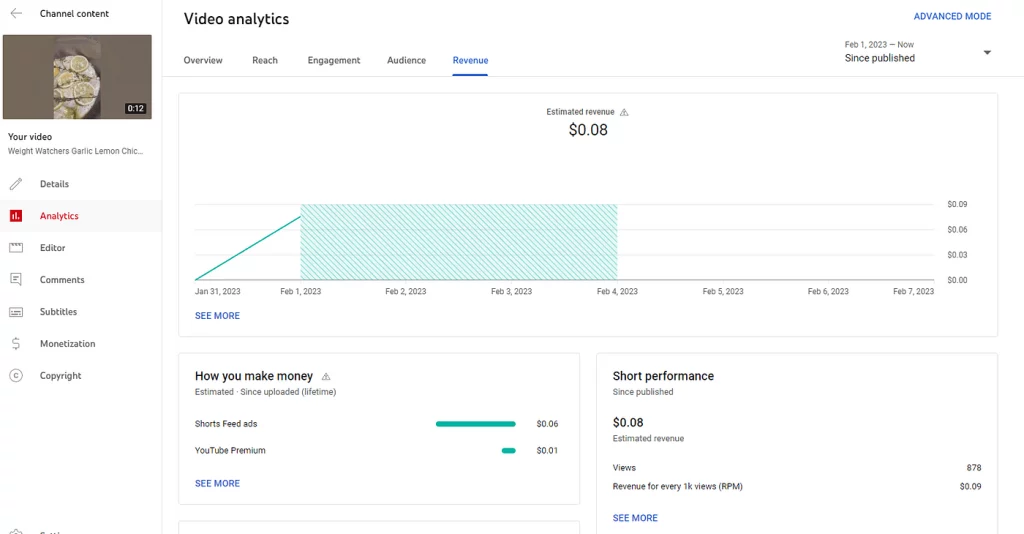
The payment system is reliable, paying creators for views from various traffic sources. This makes YouTube a great option for those seeking stable income, even if the earnings per view are on the lower side. Compared to TikTok’s variable RPM, YouTube provides more predictability.
3. You prioritize Long-Term Growth
YouTube Shorts is an excellent platform for creators aiming to build a long-lasting online presence.
Even if a video doesn’t blow up right away, it can still grow steadily and add long-term value to your channel. Thanks to search optimization, Shorts can keep attracting views for months after they’re uploaded.

This algorithm is especially helpful for evergreen content like educational content, tutorials, or niche topics that consistently draw search traffic over time.
When to use TikTok?
TikTok excels when you’re targeting a younger audience or aiming for viral trends. Let’s get into the best situations for choosing TikTok as your go-to platform:
1. You Focus on being Viral
If your content thrives on timely relevance like memes, trending songs, or viral topics, TikTok will be more suitable for you to make a quick impact.

TikTok is the perfect platform for creators who love jumping on trends and viral challenges. The platform’s design makes it easy for users to remix popular content using features like duets and stitches, allowing creators to quickly join in on trending conversations.
2. You seek Younger Audiences
With most of its users being Gen Z, TikTok is the go-to platform for creators wanting to reach a younger crowd. Whether you create fashion, memes, or educational content aimed at younger audiences, TikTok offers a highly engaged community eager to discover new trends.
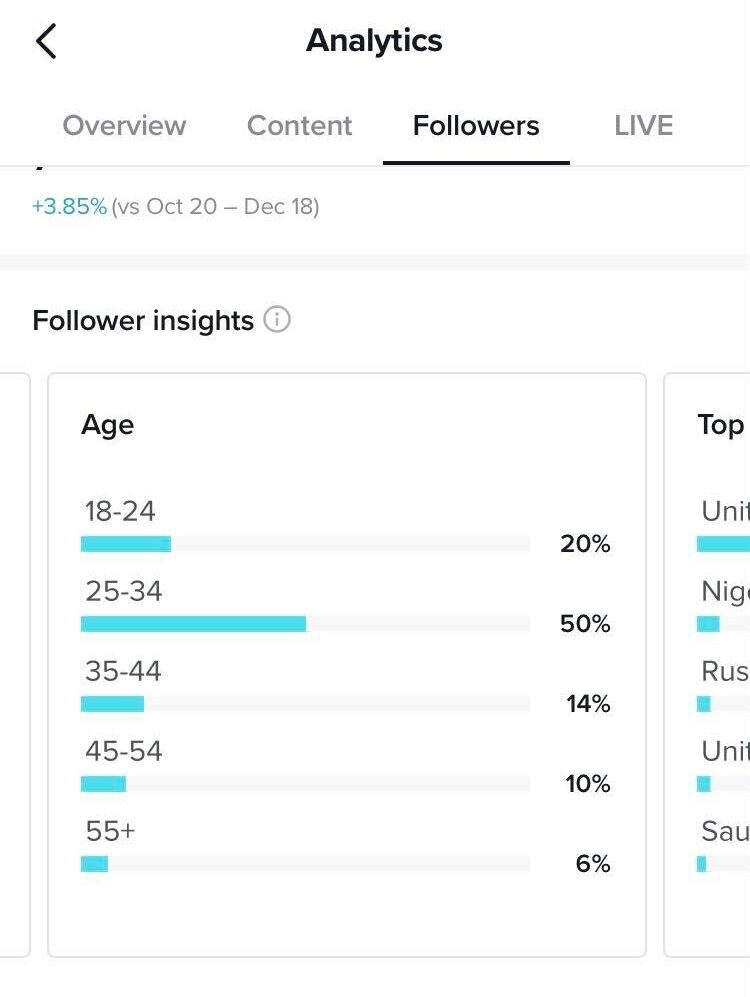
Features like polls, challenges, and stickers make it easy to directly interact with this audience. If connecting with Gen Z and staying relevant in their world is your goal, TikTok offers a perfect space for youth-focused content creation.
3. You want to Experiment with More Tools and Effects
If you enjoy being creative and exploring new ideas, TikTok will inspire you to take your content to new heights.
TikTok provides a wide range of effects, AR filters, and interactive features. This platform is great for those looking to experiment with different content styles. TikTok offers endless tools for content creation for quirky videos, duets, or playing with sound effects.

YouTube Shorts vs TikTok: Which One to Choose?
Ultimately, the choice between YouTube Shorts and TikTok depends on your goals. There’s no single best platform. The ideal choice hinges on understanding the strengths of each, as can be seen in the summary below:
| Aspects | YouTube Shorts | TikTok |
|---|---|---|
| 1. Audience and Demographics | Broader age range (18-49), global reach, strong base of existing YouTube users | Younger audience (mainly 18-34), mobile-first, strong in Gen Z-heavy regions |
| 2. Content Creation Tools & Editing | Basic tools: text overlay, speed control, filters, licensed music; Remix feature for repurposing | Advanced tools: filters, green screen, trending sounds, stickers, Duet, Stitch |
| 3. Algorithm and Reach | Slower growth, but evergreen visibility via YouTube search and recommendations | Fast virality potential via “For You” feed, trends, hashtags, and music-driven discovery |
| 4. Monetization | Integrated monetization options: ad revenue, memberships, Super Thanks, etc. | Creator Fund and TikTok Rewards; RPM varies, more limited compared to YouTube |
| 5. Analytics & Performance Tracking | Deep insights via YouTube Studio | In-app analytics for Pro accounts |
| 6. Community Building & Engagement | Stronger over time | Real-time interaction |
While YouTube Shorts benefits from the vast YouTube ecosystem, TikTok thrives on trendsetting and reaching a younger demographic.
For businesses looking to maximize impacts on TikTok, partnering with experts who understand the TikTok Ads landscape, like Mega Digital, can help craft campaigns that truly resonate with the audience.
Creators can further leverage both platforms to expand reach across diverse demographics, experiment with different types of content, and tap into the strengths of each platform’s algorithm and features.
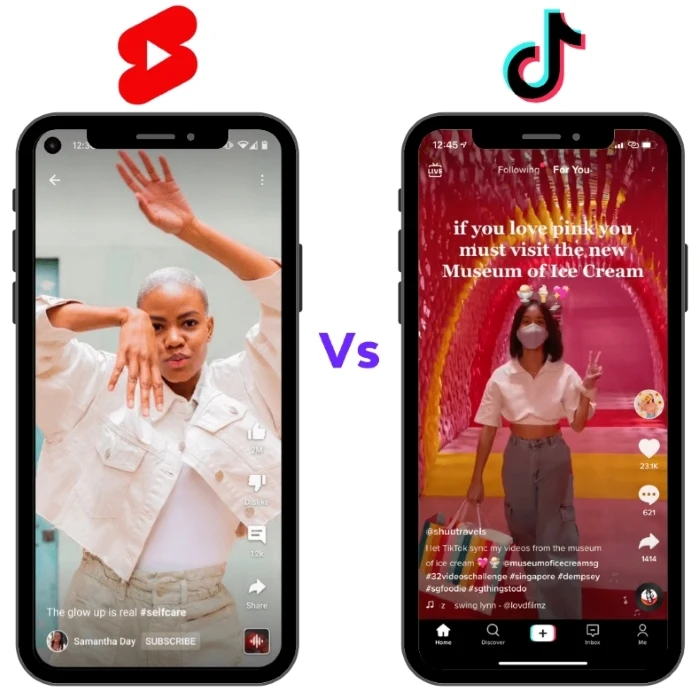
>>> Read more: Instagram Reels vs TikTok: Which is better for your brand?
Wrap Up
Both YouTube Shorts and TikTok have their advantages when it comes to creators in the short-form content vertical. TikTok boasts creative tools while YouTube Shorts has more diverse users and solid monetization schemes.
The platform one chooses would depend on the type of content one produces, the audience they are targeting, and their monetization goals. By taking these considerations into account, you will know where to upload your content for maximum reach and engagement.








